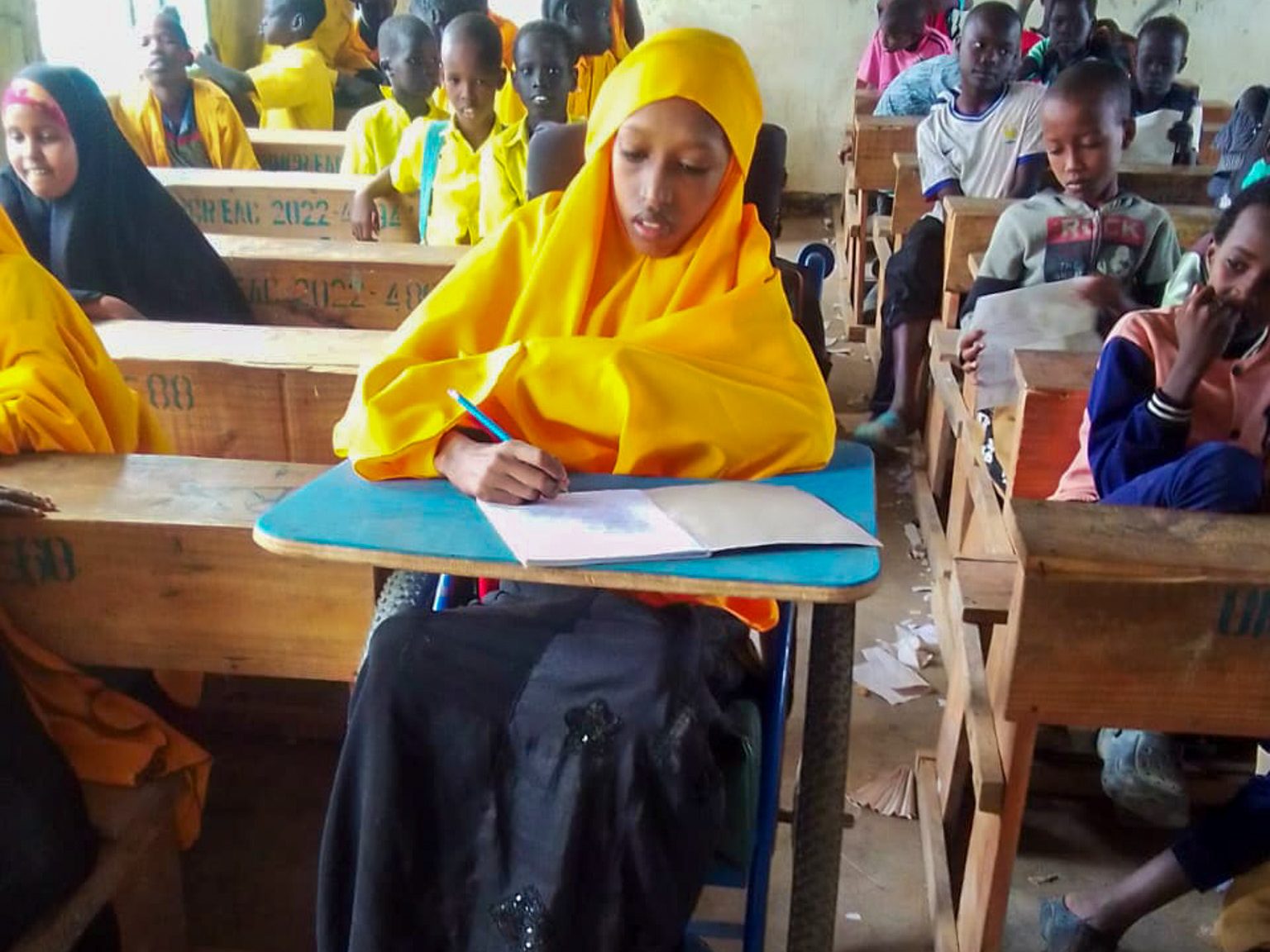Cash Transfers Bring Learners with Disabilities Back to School in Dadaab

Learners with disabilities in Dadaab refugee camp face significant barriers to education—including stigma, lack of transportation, inaccessible facilities, and a shortage of trained teachers. A recent Rapid Needs Assessment by Save the Children (July 2025) and UNHCR’s July 2025 report highlight that these challenges contribute to higher dropout rates and inconsistent attendance. Of the 199,224 school-age children in Dadaab, only 40% are enrolled in learning institutions—and just 3% of those are learners with disabilities. Girls are disproportionately affected, making up 52% of out-of-school children.
Halimo Abdalla was one of them. At just 12 years old, she arrived in Kenya from Somalia, fleeing drought and illness with her mother and siblings. Though she found safety in Dadaab, the opportunity to learn remained out of reach. For two years, Halimo stayed home—held back by stigma, distance, and the absence of support for children with disabilities.
“I used to stay home because I couldn’t get to school on my own,” Halimo says. “I was afraid of being ridiculed, and my mother was busy trying to feed us.”
Halimo’s experience reflects a wider crisis. A multi-stakeholder needs assessment conducted in 2024 identified key barriers to education for children with disabilities: lack of transportation, economic hardship, inaccessible facilities, and persistent stigma. These challenges continue to push vulnerable learners—especially girls—out of the classroom.
Now 15, Halimo is back in class—and thriving. Her return to school was made possible through a cash-based support programme implemented by FCA Kenya, with funding from the European Civil Protection and Humanitarian Aid Operation (ECHO). The initiative provides monthly transport stipends and school uniform support to learners with disabilities and other vulnerable children in Dadaab.
Halimo receives €14 (KES 2,000) each month to cover transport costs. Her mother, Muslimo Ali, has arranged for a trusted neighbor to escort her to school when she’s unavailable. The uniform support has also helped Halimo feel more confident and accepted among her peers.
“The best thing that has happened me is being enlisted by FCA,” Halimo says. “I feel more confident to engage with my classmates. I want to make my mother and FCA proud.”
Muslimo has seen the change firsthand. “This is indeed the currency of hope,” she says. “My daughter has moved from the margins to the mainstream.”
Providing a programmatic lens, FCA’s Project Officer for ECHO project Jeremiah Orongo explains; ” FCA is intervening where it matters most in the refugee camp. We have been deliberate in targeting the most at-risk population—learners with disabilities—and supporting them to access education through cash interventions. We have witnessed improvement in enrolment and consistency in attendance of learners with disabilities in learning institutions in Dadaab camp. Indeed, cash transfer is bringing learners with disabilities back to school.”
To address the education gap, FCA Kenya has partnered with community leaders and Refugee-Led Organisations (RLOs) to identify out-of-school children and connect them to learning opportunities. In December 2024, Halimo was identified during one of these outreach sessions and enrolled in school shortly after.
Today, FCA’s Cash-Based Interventions support 3,250 learners across 30 formal schools in Dadaab, including 379 learners with disabilities. By removing economic and logistical barriers, the programme is helping children like Halimo access inclusive, quality education in safe learning environments and reclaim their right to dream.
Text: Jeremiah Orongo/ FCA
Edited by : Daisy Obare/FCA